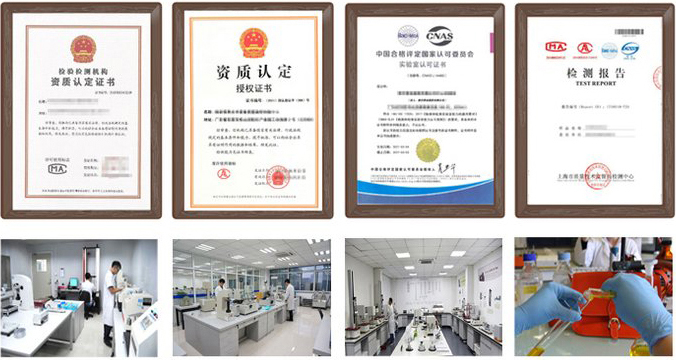Electrical insulation tools-insulation pad detectionHow to apply for a report? What items need to be tested? We will conduct testing and evaluation in strict accordance with the standards. We can also provide personalized testing plans and reports according to your needs.
The detection of insulating pads in electrical insulation tools is a comprehensive evaluation process covering multiple key performance indicators to ensure its safety and reliability in practical applications. The following are the main methods for detecting insulating pads:
1. Appearance inspection
Purpose: Evaluate the surface condition of the insulating pad and check whether there are defects that may affect its insulation performance.
Method: Visually check whether the surface of the insulating pad is flat and smooth and whether there are cracks, bubbles, scratches, dirt, and other problems. Tools such as magnifying glasses can be used to assist in inspection.
2. Dimension measurement
Purpose: Ensure that the thickness and size of the insulating pad meet the design requirements and avoid performance degradation due to dimensional deviation.
Method: Use precision measuring tools such as vernier calipers, micrometers, or thickness gauges to accurately measure the length, width, thickness, and other dimensions of the insulating pad.
3. Electrical performance test
Insulation resistance test
Purpose: Evaluate the resistance value of the insulating pad at a specific voltage to reflect its ability to prevent current from passing.
Method: Use an insulation resistance tester to test the insulating pad at a predetermined voltage (such as 500V or 1000V) and record the resistance value.
Withstand voltage test
Purpose: To test the insulation pad's ability to withstand high voltage and ensure that it will not break down or leak under extreme conditions.
Method: Apply a voltage higher than its rated voltage by a certain multiple (such as 2 or 3 times the rated voltage) to the insulation pad for a certain period of time (such as 1 minute) to observe whether breakdown occurs. At the same time, the leakage current can be measured using an ammeter to evaluate the insulation performance.
Surface resistance test
Purpose: To evaluate the resistance characteristics of the insulation pad surface and understand its ability to resist moisture and pollution.
Method: Use a surface resistivity tester to apply a specific voltage to the surface of the insulation pad and measure its surface resistivity.
IV. Physical performance test
Hardness test
Purpose: Use a hardness tester to measure the hardness of the insulation pad to evaluate its deformation resistance and durability during use.
Tensile strength and elongation at break test
Purpose: To evaluate whether the mechanical properties of the insulation pad meet the standards.
Method: Use a universal testing machine to perform a tensile test on the insulation pad to measure its tensile strength and elongation at break.
Abrasion resistance test
Purpose: To evaluate the wear resistance of the insulation pad during long-term use.
Method: Use a wear resistance tester to simulate the friction and wear in the actual use environment to determine the service life and durability of the insulating pad.
V. Special performance test
Chemical corrosion resistance test
Purpose: Evaluate the performance of the insulating pad when exposed to chemical substances.
Method: Use a chemical corrosion tester to simulate different chemical environments to determine whether the insulating pad can maintain its insulation performance under harsh conditions.
Temperature stability test
Purpose: Evaluate the performance stability of the insulating pad under different temperature conditions.
Method: Use a temperature stability tester to simulate high and low-temperature environments to determine the insulation effect and durability of the insulating pad under extreme temperatures.
Partial discharge detection
Purpose: Determine whether there is partial discharge in the insulating pad.
Method: Use measuring equipment such as discharge probes and high-voltage signal generators for detection.
X-ray detection
Purpose: Find defects such as cracks and bubbles inside the insulating pad.
Method: Use X-ray detection instruments to perform non-destructive testing on the insulating pad.
VI. Aging test
Purpose: Simulate the environmental conditions after long-term use and observe the performance changes of the insulating pad.
Method: Place the insulating pad in an aging test chamber, set a specific temperature, humidity, and time, and observe its performance changes, such as whether the hardness, tensile strength, etc. have significantly decreased.
VII. Chemical analysis
Purpose: Ensure that the material composition of the insulating pad meets environmental protection and safety requirements and will not cause harm to the environment and users.
Method: Use chemical analysis methods such as infrared spectroscopy analysis and gas chromatography analysis to qualitatively and quantitatively analyze the material composition of the insulating pad.
VIII. Label inspection
Purpose: Verify whether the label on the insulating pad is clear and accurate, including manufacturer information, production date, model specifications, etc., to ensure traceability.
In summary, the detection method of the insulating pad involves multiple aspects, including appearance, size, electrical properties, physical properties, special properties, and aging tests. These detection methods together constitute a complete system for the quality assessment of the insulating pad, ensuring its reliability and safety in the field of electrical safety.
Test report function
1、Project bidding: issue authoritative third-party CMA/CNAS qualification report;
2、E-commerce platform entry: quality inspection reports recognized by major e-commerce platforms;
3、Used as sales report: issuing a test report with legal effect to make consumers feel more at ease;
4、Papers and scientific research: providing professional and personalized testing needs;
5、Judicial services: providing scientific, fair and accurate testing data;
6、Industrial problem diagnosis: verifying the troubleshooting and correction of problems in industrial production;


 National free customer service telephone 400-101-7153
National free customer service telephone 400-101-7153 

